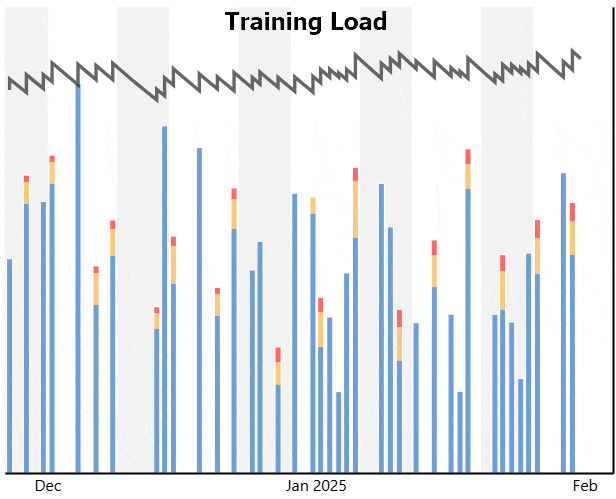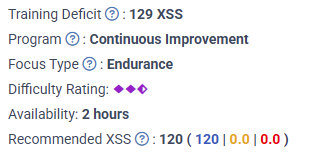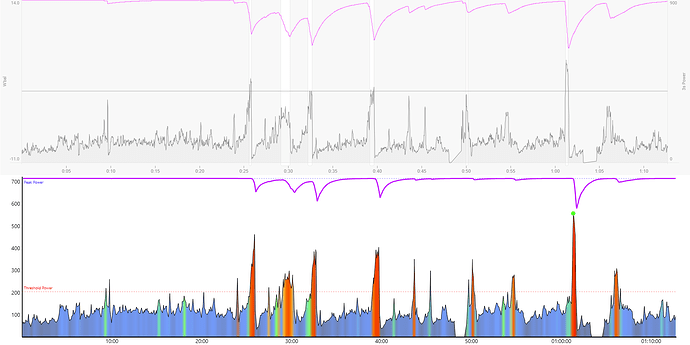Go ahead and push the Recovery Demands (RD) slider to the right until you see yellow/tired on the Planner where you expect to see it based on how you’re feeling.
While the slider isn’t incremented by numbers there are 10 positions left and right from center.
Try a couple clicks to the right of center, Save, then refresh the Planner view and repeat until you feel it’s dialed in.
The sliders are Xert’s way of tweaking your position on the bell curve and dialing in what works better for you. They can be adjusted over time as your fitness changes. For example, I slid RD to the right during my first XFAI plan and am now back to the middle default.
I’m currently at three stars like you, training in Continuous mode with Puncheur for Focus at Mod-1 ramp rate. I’m getting plenty of 3-diamond HIT days and handling them well. What you would likely call a ton I find quite feasible to do day after day until endurance kicks in from several HITs in a row or an especially hard workout.
Soon I’ll switch to Base-Build-Peak or an XFAI plan to peak in summer.
As mentioned, Continuous ATP is similar to Build phase and that means less LIT, more HIT.
The assumption is you have already established a base and want to build on it and adjust it to meet your needs whether by changing Focus or ramp rate or a combination. You could implement more LIT by tweaking the settings and making distinct choices but you’re looking more for “a plan” to follow, not leading the charge.
Now that I understand where you’re coming from (3 years is new to cycling) and where you want to go, I’m going to suggest you try setting an XFAI Goal and note the differences in a forecast versus Continuous ATP. For example, set a goal to increase Climbing power by a few watts over say a 60-day period or more. You can always switch back to Continuous but I think you’ll get more out of a forecast since you can look ahead to see how it works. You can also tweak settings and recast and see what changes. I good place to do that is on the forecast chart where you can zoom in/out to view details along with weekly TL changes and distribution of low/high/peak over the course of the forecast.

Continuous TP includes a strong element of self-coaching while XFAI will provide more of the structure I think you want, including phased periodization. You also get that with XATA Base-Build-Peak but I hesitate to direct you there if your hours are restricted and you don’t have the ability to steadily increase TL between now and a target event date (real or imaginary).
Note: Settings such as Availability are retained regardless of program type.
Since you’re a relative novice to cycling your experience is going to be a lot different from those of us with many years of cycling under our belt. Even though I haven’t competed in decades the status stars labeling did make sense to me along with Athlete Types (like intervals.icu)
As for our criticism of old-school conventions versus Xert’s adaptive approach, take that with a grain of salt. Some of us are a bit jaded with the old ways. Many here have been there, done that and read those books including first editions when they were the only editions available. If I remember correctly one of those books came with a CD tucked inside the back cover or was it a floppy disk? 
The major benefit to me is the flexibility inherent in Xert. Start a progression, build a plan, tweak it, steer your boat in the direction you want to go, switch plans, choose alternate workouts, flip from indoors to outdoors on a whim, experiment, dial it up or down, and essentially learn to self-coach in a manner that works best for you.
That may not be the ideal environment for those new to the sport who are likely more interested in being told what to do. While you can setup Xert to do that, it shines when you’re in control.









